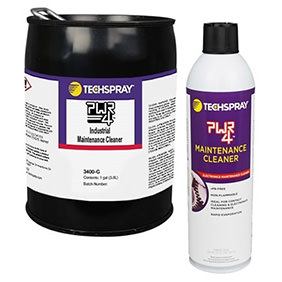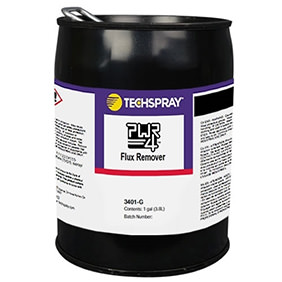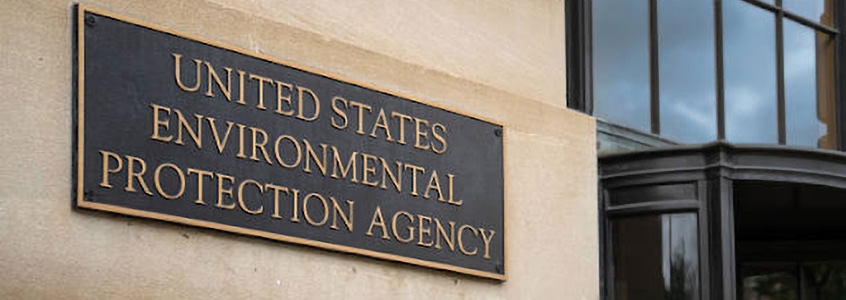In another major development to improve public safety and environmental health, the U.S. Environmental Protection Agency (EPA) has proposed a new rule targeting 1-Bromopropane, also known as 1-BP and nPB, a solvent commonly used in many industries and products, especially vapor and aerosol degreasing. This decision comes after the chemical has been shown to potentially cause cancer, fertility problems, and negative environmental effects.
This ruling will affect numerous businesses using 1-BP in their product line, making it vital to consider transitioning to alternatives. Luckily, Techspray offers safe, powerful nPB replacements in our PWR-4 industrial maintenance and flux cleaners, ensuring compliance with the EPA’s ruling and promoting safer operations all around.
What is 1-BP?
1-Bromopropane, or 1-BP, is a popular solvent used for cleaning and degreasing in sectors like electronics, automotive, and dry cleaning. Despite its usefulness, concerns have been mounting over its safety and impacts on the human body and environment. Recent studies have linked 1-BP to severe health risks, including respiratory problems and potential carcinogenic effects.
Overview of EPA's Ruling
The EPA's new ruling will place strict limitations on the commercial and industrial use of 1-BP due to its adverse health and environmental impacts. The decision is rooted in extensive research highlighting the chemical’s potential to cause serious health issues, including cancer and reproductive harm. The ruling mandates that industries using 1-BP will need to either reduce or eliminate their use of it, pushing for safer alternatives.
Implications
Businesses that rely heavily on 1-BP will need to adapt quickly to comply with the new regulations. This will involve finding alternative solvents such as Techspray’s PWR-4 Industrial Maintenance Cleaner and Flux Remover. The ruling represents a shift towards strong chemical safety standards and poses both challenges and opportunities for the affected industries.
Techspray’s Safer Alternatives:


PWR-4 Industrial Maintenance Cleaner and Flux Remover
At Techspray we offer powerful cleaning solutions from our PWR-4 line that are safer than nPB, nonflammable, and cost-effective. Our cleaners remove oils, greases, silicones, refrigerant oils, fluxes, adhesives, and other common industrial contaminants.
Benefits of Our Industrial Maintenance Cleaner and Flux Remover
- Non-flammable
- Much safer than nPB, TCE, Perc & Methylene Chloride
- Powerful cleaner for heavy greases, R, RMA & no-clean fluxes
- Available in aerosol or bulk for vapor-degreasing, ultra-sonic and immersion cleaning
- Rapid evaporation
- 3400 - NSF registered K1 and K2
- Lower toxicity and odor
- Non-ozone depleting
- HAPs free
Enjoy superior cleaning performance without the unnecessary exposure to harmful chemicals with Techspray! Our PWR-4 cleaners are designed to replace nPB, TCE, Perc, and Methylene Chloride, ensuring compliance with the EPA’s regulations while keeping you safe from the potential health effects of these solvents.
Get in touch with us today to explore our 1-BP alternatives!
Full Statement from our Regulatory Consultant
EPA has published the proposed rule under the Toxic Substances Control Act (TSCA) for the solvent 1-bromopropane (1-BP). Exposure to this chemical can cause serious health effects such as skin, lung, and intestinal cancer; damage to the liver, kidneys, and nervous system; and effects on the reproductive systems that lead to reduced fertility. If finalized, the rule would prohibit all but one consumer use of 1-BP, as well as some workplace uses. 1-BP is a solvent that is widely used in cleaning and degreasing operations, spray adhesives, and dry cleaning. 1-BP is also used in insulation for building and construction materials and in the manufacture of other chemicals. Consumer uses of 1-BP include aerosol degreasers, spot cleaners, stain removers, and insulation.
EPA is proposing to protect the public from exposure to 1-BP by banning all consumer uses of this chemical except in insulation (because EPA determined that this use did not contribute to the unreasonable risk to people). The ban on consumer uses would begin to go into effect within 6 months after the final rule is published and would come fully into force within 15 months.
EPA is also proposing to ban some industrial and commercial uses of 1-BP for which EPA analysis identified safer alternatives. The ban on industrial and commercial uses would begin to go into effect 6 months after the final rule is published and would come fully into effect within 18 months. The industrial and commercial uses to be prohibited include:
- Dry cleaning, spot cleaning, and stain removers.
- Adhesives and sealants.
- Coin and scissor cleaners.
- Automotive care products used as engine degreasers, brake cleaners, and refrigerant flushes.
- Anti-adhesive agents used for mold cleaning and release products.
- Functional fluids used as refrigerants or cutting oils.
- Arts, crafts, and hobby materials.
The proposed rule would also require worker protections for several industrial and commercial uses of 1-BP that would continue but which EPA has determined contribute to the unreasonable risk to human health that must be addressed, including its use in vapor and aerosol degreasing, electronics, and electronic and metal products. To continue these uses, non-Federal workplaces would need to implement a Workplace Chemical Protection Program, including an exposure limit (0.05 ppm), within 12 months. EPA is also proposing to require the use of chemical-resistant gloves within 6 months for some uses for non-Federal workplaces, including manufacturing, processing (which includes recycling) and disposal, to protect workers from exposures to 1-BP through the skin. Federal agencies (and Federal contractors acting for or on behalf of the Federal Government) would be required to implement a Workplace Chemical Protection Program and use chemical-resistant gloves within 3 years. Many workplaces already employ stringent controls to reduce exposures to 1-BP. For some workplaces, such as those using 1-BP in vapor degreasing, these existing controls may already sufficiently reduce exposure to meet the inhalation exposure concentration limit proposed in this rulemaking.
The proposed rule is attached and available at:
https://www.regulations.gov/docket/EPA-HQ-OPPT-2020-0471/document
The Economic Analysis is available here:
https://www.regulations.gov/document/EPA-HQ-OPPT-2020-0471-0114
The Alternatives Assessment is available here:
https://www.regulations.gov/document/EPA-HQ-OPPT-2020-0471-0063
Areas of particular importance include information on whether the implementation timelines are viable and if the proposed ECEL of 0.05 ppm is workable.
Comments will be due 45 days after the proposal is published or September 23rd.
Contact us at Techspray today to learn more about the new ruling and how we can offer safer, cost-effective alternatives!




